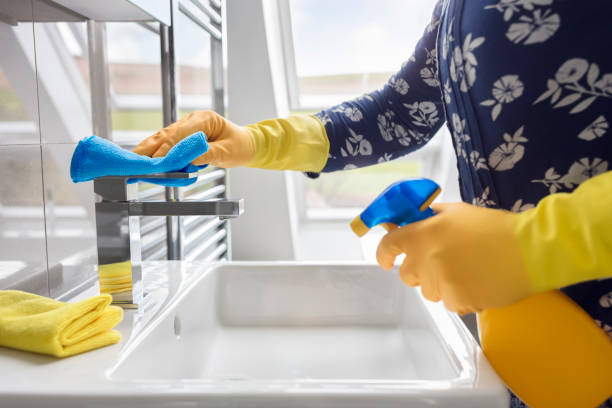From accidental spills to unexpected
mishaps, stains can easily disrupt your home's pristine appearance. Whether
it's a stubborn coffee mark on the carpet or a grease stain on your favorite
shirt, knowing how to tackle tough stains effectively can make all the
difference. In this guide, Mya Cleaning Services unveils expert cleaning tips and
techniques to help you conquer even the most challenging stains with confidence
and ease.
Understanding Stain Types
·
Water-Based Stains: Common examples include coffee, tea, juice, and wine spills. These
stains can usually be treated with water-based cleaning solutions.
·
Oil-Based Stains: Grease, cooking oil, and makeup stains fall into this category.
Oil-based stains require specialized solvents or detergents to break down the
oil and lift it from the surface.
·
Protein-Based Stains: Stains from blood, urine, or food-containing proteins belong to
this group. Protein-based stains may require enzymatic cleaners to break down
the proteins and remove the stain effectively.
Essential Tools and Ingredients
·
White Vinegar: An all-purpose cleaner that can tackle various stains and odors.
·
Baking Soda: Ideal for absorbing odors and lifting stains from fabrics and
carpets.
·
Hydrogen Peroxide: Effective for removing blood and other protein-based stains.
·
Stain Remover Spray: Choose a stain remover specifically formulated for the type of
stain you're dealing with.
·
Soft Bristle Brush: A gentle brush agitates the stain without damaging the surface.
Tackling Common Household Stains
1.
Coffee and Tea Stains: Blot the stain with a clean cloth to absorb excess liquid. Then,
mix equal parts white vinegar and water and apply it to the stain. Blot again
until the stain lifts.
2.
Grease Stains: Sprinkle baking soda over the grease stain and let it sit for a few
minutes to absorb the oil. Then, gently scrub the area with a soft brush and a
mixture of dish soap and water.
3.
Red Wine Stains: Quickly blot the stain with a clean cloth to remove as much liquid
as possible. Then, pour white wine over the stain to dilute the color. Sprinkle
baking soda over the affected area and let it sit before rinsing with cold
water.
4.
Ink Stains: Apply rubbing alcohol or nail polish remover to a clean cloth and
dab the ink stain until it fades. Rinse the area with water and repeat if
necessary.
5.
Pet Stains: Blot the stain with paper towels to absorb moisture. Then, apply a
mixture of hydrogen peroxide and dish soap to the stain and let it sit for a
few minutes before blotting again.
With the right knowledge and tools,
tackling tough stains doesn't have to be a daunting task. By understanding the
type of stain you're dealing with and employing the appropriate cleaning
techniques, you can restore your belongings to their former glory. Remember to
act quickly, be patient, and test any cleaning
solution on a small, inconspicuous area before applying it to the entire
stain. With Mya Cleaning Services' expert tips, you'll be equipped to conquer
any stain that comes your way.


Comments
Post a Comment